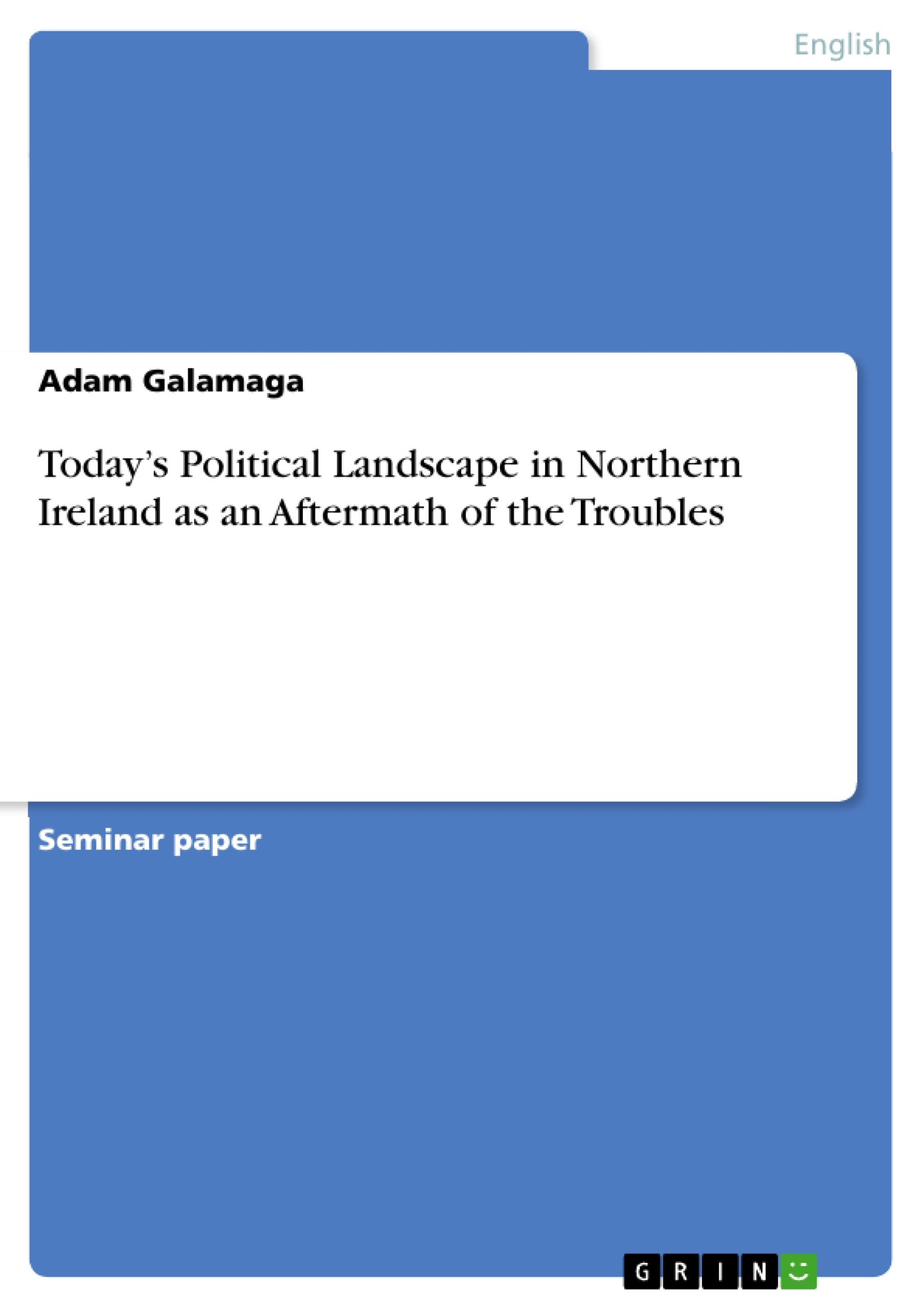The formation of two modern states of the island of Ireland clearly dictated that identity should become defined in terms of 'Irish' or 'British', but not both. The disputed status of Northern Ireland invoked a conflict between Irish Catholics and British Protestants which lasted since the 1960s and is today known as the “Troubles”. The conflict brought many deaths because the violence was carried out by numerous paramilitary groups. Because of a bad security situation it came to the Abolition of Stormont in 1972, after which Northern Ireland was ruled directly from Westminster. The need for local administration, however, became apparent very soon and there was a common opinion that direct rule should ultimately be replaced: the norm would be a normal government. All political parties that have developed throughout the last decades have a specific notion of the political development of Northern Ireland in general and of the “Troubles” in particular. Main positions of particular political parties in Northern Ireland on these issues will be the subject of this essay. First, however, follows a short characterisation of the political system of the country.
Inhaltsverzeichnis (Table of Contents)
- I. Historical Background of Today's Politics in Northern Ireland
- II. Political System of Northern Ireland
- II.I. Political Parties
- III. Unionist Parties
- III.I. Democratic Unionist Party
- III.II. Ulster Unionist Party
- III.III. Progressive Unionist Party
- IV. Republican Parties
- IV.I. Sinn Féin
- IV.II. Social Democratic and Labour Party
- V. Cross-community Parties
- V.I. Alliance Party
- V.II. Ulster Third Way
- VI. Conclusion: Northern Ireland's political future
Zielsetzung und Themenschwerpunkte (Objectives and Key Themes)
This essay aims to analyze the current political landscape of Northern Ireland as an aftermath of the "Troubles." It examines the historical roots of the conflict, the political system, and the main positions of different political parties.
- Historical development of the conflict between Protestants and Catholics in Northern Ireland
- The influence of the Good Friday Agreement on the political system
- The role of various political parties in shaping Northern Ireland's future
- The political system of Northern Ireland and its relationship to the UK
- The role of the European Union in Northern Ireland
Zusammenfassung der Kapitel (Chapter Summaries)
Chapter I provides a detailed historical background of the conflict in Northern Ireland, tracing it back to English colonization and the subsequent division of the island into two states. It explores the historical events that led to the "Troubles" and highlights the importance of understanding the past to interpret today's political landscape.
Chapter II presents the current political system of Northern Ireland, focusing on the legacy of the Good Friday Agreement. It describes the devolved nature of Northern Ireland's government, the role of the Northern Ireland Assembly and Executive, and the representation of Northern Ireland within the UK Parliament and EU institutions.
Chapter II.I introduces the main political parties in Northern Ireland, classifying them as Unionist or Republican. It briefly explores the historical development of the party system and the impact of the Civil Rights Campaign.
Schlüsselwörter (Keywords)
This essay explores the themes of the "Troubles," the Good Friday Agreement, Northern Ireland's political system, Unionism, Republicanism, and the role of various political parties in shaping the future of Northern Ireland. The essay also examines the impact of historical events, including English colonization, the Irish War of Independence, and the Civil Rights Campaign.
- Quote paper
- Adam Galamaga (Author), 2009, Today’s Political Landscape in Northern Ireland as an Aftermath of the Troubles, Munich, GRIN Verlag, https://www.grin.com/document/142222



